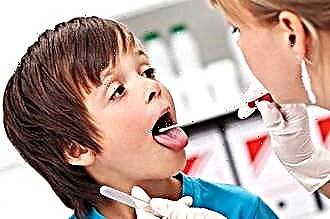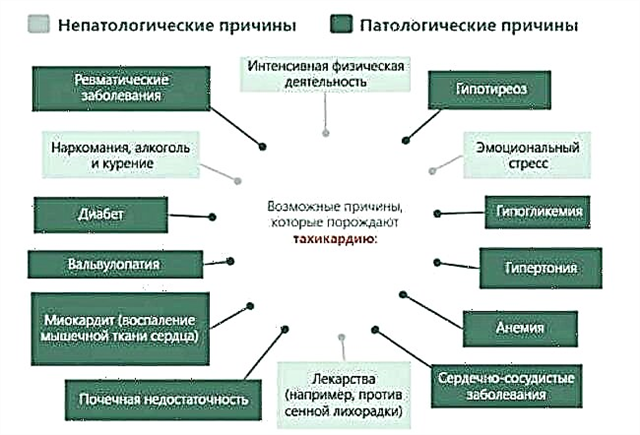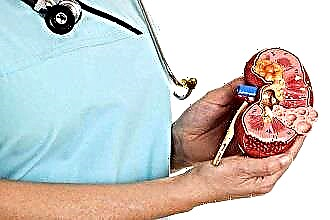The heart is one of the vital organs of the human body, the formation of which begins even from the time of intrauterine development of the fetus. Its anatomical and physiological characteristics depend both on the state of health of the woman during pregnancy and on the way of human behavior, bad habits, diseases suffered throughout life, the influence of medications taken.
What is the myocardium and how does it work?
The heart is one of the abdominal organs of our body. It has four cavities that are filled with blood (circulating from one chamber to another): the right and left ventricles, the right and left atria. All of them are separated from each other by partitions, in the walls of which there are small holes with valves responsible for the targeted movement of blood.
Myocardium is one of the layers of the heart wall. It is muscular in nature. From the inside, it is covered with an inner membrane - the endocardium. From the outside, it is surrounded by an epicardium.
Heart muscle cells are histologically slightly different from our skeletal muscles. This difference in structure is associated with electrophysiological features and the need to propagate the action potential between myocardial cells (cardiomyocytes).
The wall of the left ventricle is better developed than the right part and the atria, which allows it to carry out a greater load.
The atrial myocardium has two layers: deep and superficial. This is necessary to ensure sufficient contractile function.
What is the main function of the heart muscle?
The heart is capable of contracting and relaxing during its work. By changing the systolic and diastolic pressure, this layer primarily helps to ensure rhythmic heart movements, which generates normal blood circulation. Hemodynamics in the human body looks like this:
 blood from the left ventricle is thrown into the aorta;
blood from the left ventricle is thrown into the aorta;- the aorta is branched into arteries (vessels of a smaller caliber), into which blood further enters;
- then, the arteries are divided into arterioles and capillaries, through the walls of these, oxygen from the blood enters the tissues;
- body cells release carbon dioxide through the vascular wall of the venules, which are then collected in the veins;
- two hollow veins (upper and lower) flow into the right atrium;
- from the right atrium, blood enters the right ventricle;
- from the right ventricle is ejected into the pulmonary trunk, divided into the right and left pulmonary arteries;
- arteries branch out to arterioles, passing through various segments of the lungs;
- the outflow of blood from the lungs occurs with the help of venules, which, having gathered in four veins, flow into the left atrium;
- from the left atrium, blood circulates to the left ventricle and the process is repeated again.
This sequence is provided by the presence of the cardiac conduction system in the myocardium (nodes, bundles and fibers, which consist of peculiar atypical muscle fibers). These structures generate impulses and drive the mechanism.
The myocardium of the ventricles and atria is separated by a septum of fibrous tissue, through which the impulse cannot be conducted, in contrast to special muscle fibers. Therefore, the conducting system of the heart consists of several parts, interconnected with each other, providing excitability and a normal, rhythmic heartbeat.
Major myocardial diseases: their danger and an algorithm for dealing with the consequences
There are many clinical classifications of heart diseases, in which the myocardium also appears as one of the layers of the organ. Its pathologies are divided into coronary and non-coronary.
Coronary diseases are diseases accompanied by impaired blood flow in the vessels of the heart. Such conditions can occur due to cardiosclerosis and thrombus formation, which lead to myocardial infarction. High blood pressure, bad habits, prolonged stress, excessive consumption of caffeine and many other factors can also cause ischemia, strokes, hibernated myocardium, etc.
Non-coronary pathologies are called pathologies that have arisen against the background of inflammatory processes, dystrophic changes, which involve the heart muscle in the process of degeneration as well.
 Among myocardial diseases, it is also customary to distinguish:
Among myocardial diseases, it is also customary to distinguish:
- myocarditis;
- myocardial dystrophy;
- cardiomyopathy.
All of them have different reasons (etiology), and in different ways affect the well-being, changing the quality of human life for the worse.
Diagnosis of the above diseases requires special attention, since their clinical manifestations are often similar to each other, and untimely provision of qualified assistance leads to the progression of hypoxia and hypertrophy of the myocardial walls. As a result, we observe an increase in preload, a change in ejection fraction, rhythm disturbances, conduction, excitability, etc.
Major myocardial diseases
| Disease | Etiology | Possible consequences | Algorithm of struggle |
|---|---|---|---|
| Myocarditis |
| Arrhythmias, development of heart failure, sepsis, cardiac arrest | First of all, the disease must be prevented. Prevention of the occurrence of myocarditis consists in adherence to bed rest during infectious processes and timely treatment. If the patient has pathology, hospitalization in a cardiological hospital is required in accordance with the standards |
| Myocardial dystrophy | Non-inflammatory muscle damage as a result of metabolic disorders in various diseases:
| Arrhythmias, myocardial contractility, development of heart failure, increased fatigue, cardiac arrest | You can prevent the onset of the disease by balancing your diet and regulating your lifestyle. Stress avoidance also has a positive effect on the likelihood of illness. Preventive examinations once a year help to identify endocrine and other pathologies in the early stages, that is, until myocardial dystrophy is detected as a consequence |
| Cardiomyopathies |
| Arrhythmias, development of heart failure, increased fatigue, cardiac arrest | You can prevent the development of cardiomyopathy by changing your lifestyle, giving up bad habits and staying in the environment of cardiotoxic drugs. When diagnosing a pathology, treatment with a cardiologist and specialists is necessary, consultations of which are required in the presence of concomitant pathology |
| Vegetative-disovarial (climacteric) cardiopathy |
| Rhythm disturbances, development of heart failure, increased fatigue | A balanced diet, the use of vitamins, minerals and trace elements contribute to an easier course of menopause. Regular examinations by a gynecologist help to identify abnormalities in the early stages, when the treatment is effective enough |
Conclusions
The myocardium is a complex part of a vital organ, which is characterized by such functions: automatism, conduction and excitability. Thanks to the smooth work of all mechanisms, our body receives the substances necessary to maintain vital activity. Dysfunctions of the heart have clinical manifestations, this is an urgent reason for contacting a doctor.

 blood from the left ventricle is thrown into the aorta;
blood from the left ventricle is thrown into the aorta;

